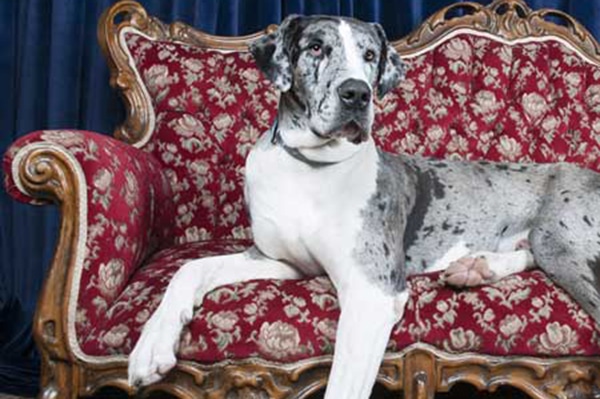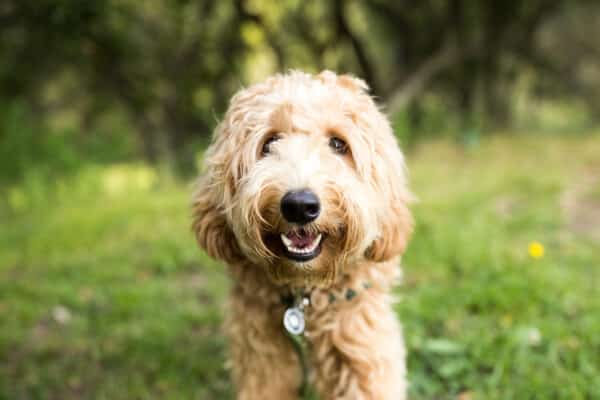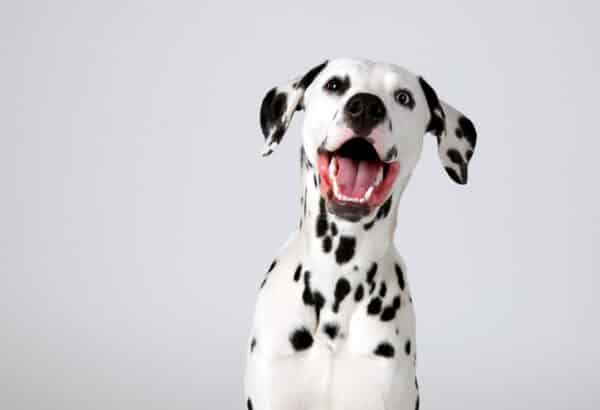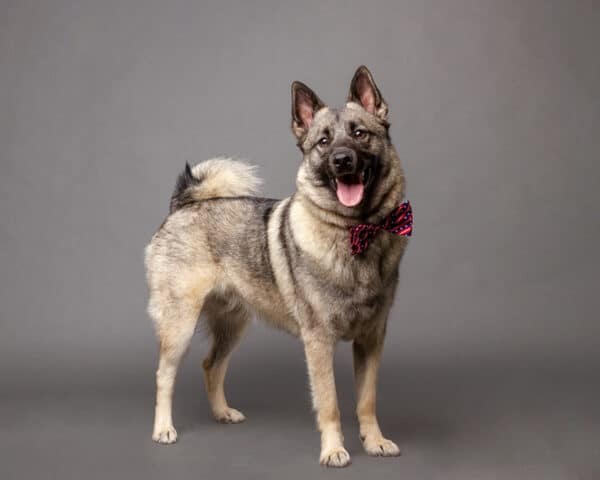Quick Facts
- Weight: 110 – 175 pounds (49.90 – 79.38 kg)
- Height: 31 – 36 inches (78.74 – 91.44 cm)
The Look of a Great Dane
Great Danes have tall, powerful yet elegant frames. They have long, narrow heads with large nostrils and erect ears. Their eyes are dark, round and have an alert gaze. They have long necks, straight legs and chiseled bodies, medium-length tails and round feet. Their coats are thick, glossy and close fitting. Great Danes can come in fawn, brindle, black, blue, harlequin (white with black patches),mantle and merle. Overall, Great Danes look proportioned, dignified and powerful.
Traits
- Large and commanding
- Noble and dignified
- Lovable
- Easygoing
- Stubborn
Ideal Human Companion
- Singles
- Active, sporty types
- Families with older children
- Strong people
What They Are Like to Live With
Great Danes combine robust strength with a refined dignity. In the home and around the yard, you’ll find them uniquely gifted with mental and physical strengths. Truly gentle giants, Great Danes are loving, affectionate and pleasant companions that like nothing better than to hang around the house with the family.
Brave and loyal, they make great watchdogs in spite of the fact that they don’t bark very much. They will bark, however, if an intruder enters the house, but it’s their size and strength that will be most intimidating.
Great Danes are great with children. Some may need a firm hand—simply because their size can be a little unwieldy around the house—but once trained they can be steady and dependable pets.
Things You Should Know
When getting a Great Dane, you must consider the obvious: These are enormous creatures. While not particularly aggressive or domineering—they are often quite mellow—Great Danes can cause damage to gardens and furniture. Train them from an early age, and always be sure to remind them who’s in charge. This will help adjust any overly protective or territorial tendencies. Once trained, they need to be periodically reminded of the rules.
Great Danes need regular brushing and grooming. Since their size makes them difficult to bathe, regular inspections of the feet, ears, nose and eyes will also keep them tidy week-to-week.
A healthy Great Dane can live as long as 13 years (the average live around 9 years). Common health issues include: hip dysplasia, bloat and congenital heart disease.
Great Dane History
In 400 A.D., Asiatic tribes with enormous, mastiff-like dogs invaded Germany. Over the centuries, these dogs proved their mettle and toughness by fighting wild boars, bears and other large beasts. The Great Dane (originally called the Deutsche Dogge), evolved when these dogs were bred with other breeds like Irish Greyhounds. First displayed in Germany in the mid-1800s, the Great Dane was popularized in the U.S. after the Great Dane Club of America was founded in 1889.





